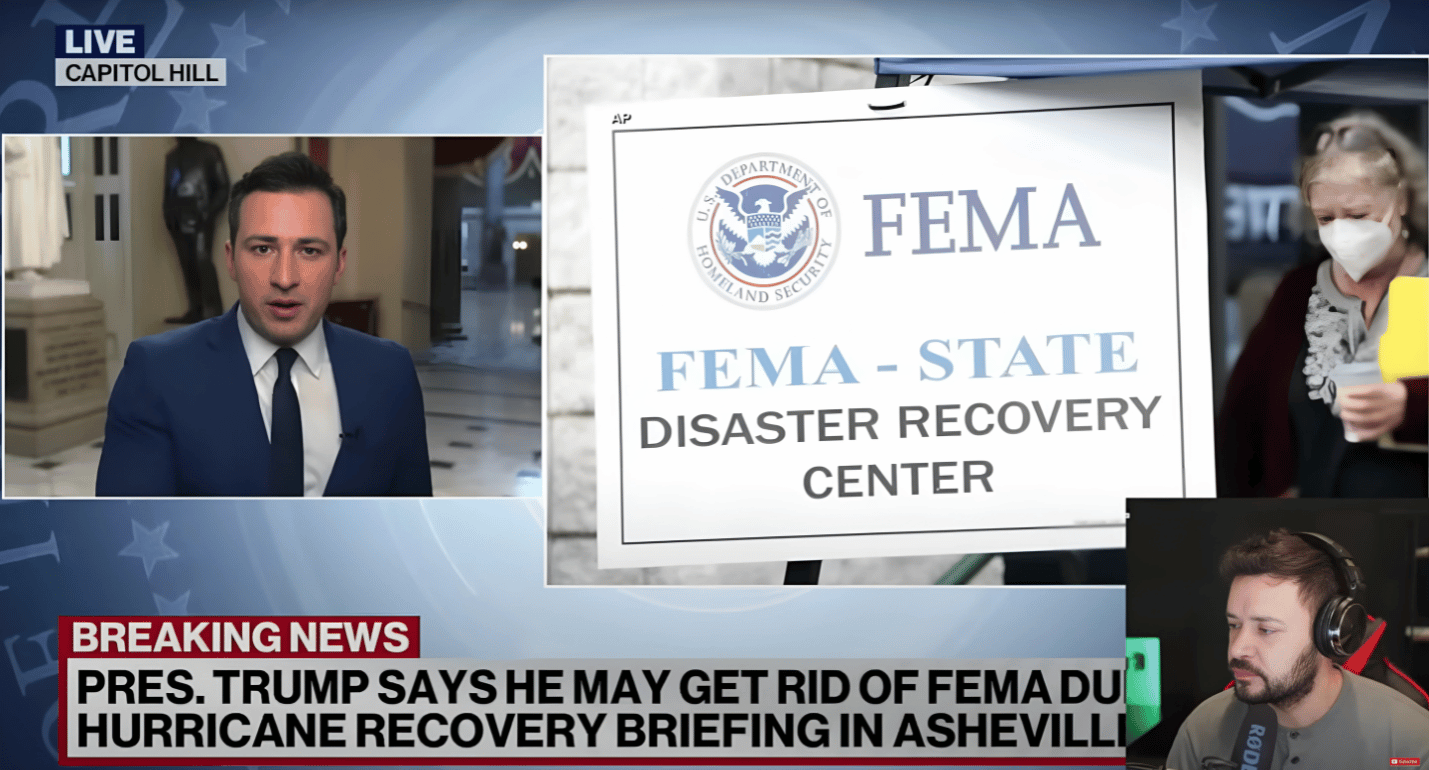Trump Proposes Overhaul or Elimination of FEMA Amid Criticism
Why FEMA Is Under Fire
President Donald Trump has sparked intense debate with his recent proposal to overhaul or possibly eliminate the Federal Emergency Management Agency (FEMA). During visits to North Carolina and California on January 24, 2025, Trump voiced sharp criticism of FEMA’s performance and floated the idea of redirecting disaster relief funds directly to states. This move, he argues, would reduce bureaucracy and improve response times.
While touring hurricane and wildfire damage, Trump accused FEMA of inefficiency, labeling the agency as “bureaucratic, slow, and costly.” He highlighted the struggles faced by North Carolina and California in recovering from recent natural disasters, pointing to FEMA’s delayed response times and the frustration felt by impacted communities.
For example, Hurricane Helen left North Carolina devastated, with over 100 lives lost and thousands of homes severely damaged or destroyed. Local residents reported significant delays in receiving FEMA aid, leaving many without hot water, housing, or basic resources months after the disaster. Trump noted that “half of emergency calls to FEMA went unanswered,” further amplifying criticism of the agency.
California, meanwhile, has faced catastrophic wildfires that experts have called the most expensive natural disaster in U.S. history. Trump has long criticized the state’s forest and water management policies and suggested that federal aid to California might be conditional on policy reforms.
Trump’s Vision: State-Driven Disaster Management
Trump’s proposal revolves around shifting responsibility for disaster relief from FEMA to state governments. He believes this approach would streamline processes, save money, and empower local leaders who better understand their regions’ needs.
“Let the states take care of disasters,” Trump said. “You’ll do it for less than half of what FEMA costs, and you’ll get a quicker response.”
He suggested a system where states receive disaster relief funds directly, bypassing FEMA entirely. This strategy, according to Trump, would allow governors to address crises more effectively and eliminate delays caused by federal oversight.
The Challenges of Eliminating FEMA
Though Trump’s comments resonated with many who feel FEMA has underperformed, dismantling the agency would be a complex and controversial process. FEMA is a sub-agency of the Department of Homeland Security, and its role in coordinating disaster relief—from providing immediate financial assistance to managing claims for damages—is integral to national emergency management.
Experts have raised concerns about whether states have the capacity to handle large-scale disasters without federal support. Many states rely heavily on FEMA’s expertise and resources, particularly in situations where local capabilities are overwhelmed.
To eliminate or restructure FEMA, Trump would likely need Congressional approval under the Presidential Reorganization Act. Historically, similar proposals have faced significant political and logistical hurdles, as seen during past administrations.
A History of Criticism
This isn’t the first time FEMA has come under fire. Critics from both sides of the political aisle have called for reforms, citing issues with bureaucracy and inefficiency. Trump’s administration, however, has taken the critique a step further by questioning the agency’s very existence.
During his visit, Trump highlighted reports of alleged bias within FEMA, such as whistleblower claims that certain FEMA employees refused to assist residents displaying Trump campaign signs. While the validity of these claims is still debated, they add fuel to the argument that FEMA’s operations need reform.
Public and Political Reactions
Reactions to Trump’s proposal have been mixed. Supporters argue that FEMA has become a bloated and ineffective agency, while opponents warn that eliminating it could leave states ill-prepared to manage large-scale disasters. Governors in states like North Carolina and California have expressed concerns about whether local agencies could take on FEMA’s responsibilities, especially when dealing with unprecedented natural disasters.
California Governor Gavin Newsom, who has frequently clashed with Trump, questioned the timing and feasibility of the proposal. “The focus should be on helping communities recover, not playing politics with disaster relief,” Newsom said.
What Comes Next?
Trump has promised to formalize his vision for FEMA in the coming weeks, potentially through an executive order. Whether Congress and state leaders will support such sweeping changes remains to be seen. For now, Trump’s remarks have reignited national debates about the role of federal agencies in disaster management and the balance of power between state and federal governments.
As natural disasters become more frequent and severe, the effectiveness of emergency response systems will remain a critical issue for policymakers and communities alike. Trump’s bold proposals may set the stage for significant changes—or spark a new round of political and logistical challenges.
